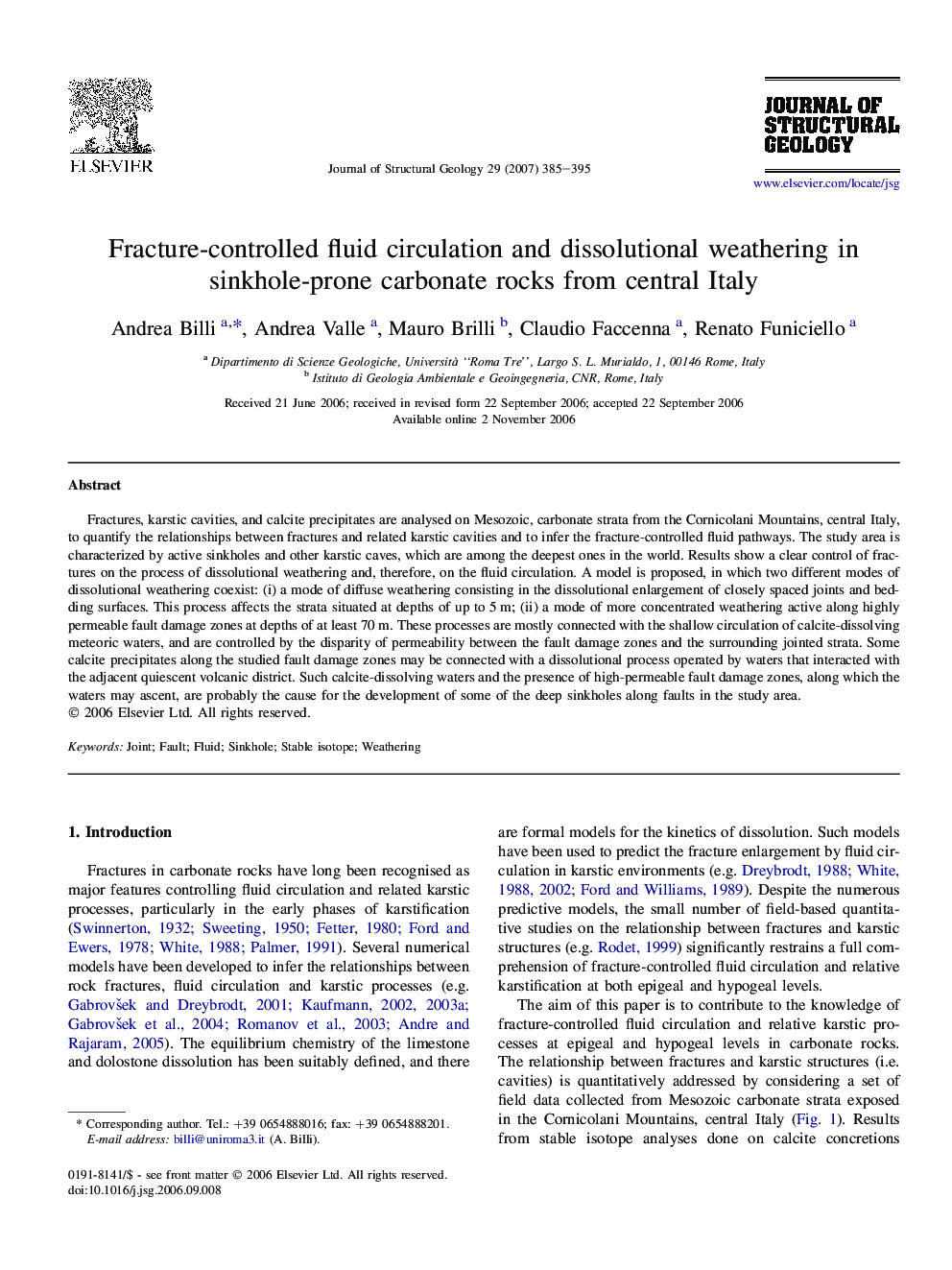| Article ID | Journal | Published Year | Pages | File Type |
|---|---|---|---|---|
| 4733922 | Journal of Structural Geology | 2007 | 11 Pages |
Fractures, karstic cavities, and calcite precipitates are analysed on Mesozoic, carbonate strata from the Cornicolani Mountains, central Italy, to quantify the relationships between fractures and related karstic cavities and to infer the fracture-controlled fluid pathways. The study area is characterized by active sinkholes and other karstic caves, which are among the deepest ones in the world. Results show a clear control of fractures on the process of dissolutional weathering and, therefore, on the fluid circulation. A model is proposed, in which two different modes of dissolutional weathering coexist: (i) a mode of diffuse weathering consisting in the dissolutional enlargement of closely spaced joints and bedding surfaces. This process affects the strata situated at depths of up to 5 m; (ii) a mode of more concentrated weathering active along highly permeable fault damage zones at depths of at least 70 m. These processes are mostly connected with the shallow circulation of calcite-dissolving meteoric waters, and are controlled by the disparity of permeability between the fault damage zones and the surrounding jointed strata. Some calcite precipitates along the studied fault damage zones may be connected with a dissolutional process operated by waters that interacted with the adjacent quiescent volcanic district. Such calcite-dissolving waters and the presence of high-permeable fault damage zones, along which the waters may ascent, are probably the cause for the development of some of the deep sinkholes along faults in the study area.
